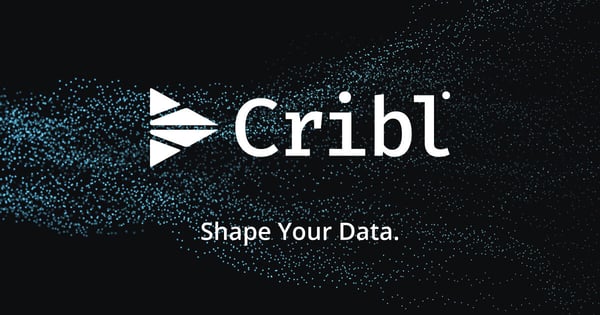Need an affordable way to store logs long term? Learn how Cribl Lake and Cribl Search let you retain full-fidelity data at low cost
Log retention used to be straightforward: only collect what you could afford and discard anything that wasn’t essential – but times have changed. Stricter modern regulations, increasing system complexity, and the rise of data-driven analytics demand storage far beyond past standards.
Organizations now need to retain everything – and traditional SIEM and APM platforms simply aren’t designed for this scale.
If you're already using Cribl Stream to reduce noise and optimize ingest, you’ve laid the groundwork. By adding Cribl Lake and Cribl Search, you can expand retention without inflating costs. These tools let you store complete log data in low-cost cloud storage and still access it when you need it – without rehydrating or reindexing.
This article explores the high costs of traditional retention, the benefits of Cribl’s model, and how to put it into action without compromising visibility or governance.
Why is Traditional Data Retention Expensive?
Most SIEM platforms charge in two key ways, based on:
- The amount of data you ingest each day
- How long you keep that data searchable
While this fee structure is manageable for short retention periods or lower volumes, it becomes a significant burden as data volumes grow and retention windows extend to meet compliance needs.
Regulations such as the PCI DSS, GDPR, and several others can require you to retain logs for extended periods. Indeed, The UK’s National Cyber Security Centre (NCSC) recommends storing logs for at least six months.
Meanwhile, environments become more complex with microservices, containerization, and increased endpoint activity contributing to ever-growing telemetry. On top of that, analysts and incident responders need access to historical data for investigations and audits.
The result? Higher license fees, bloated hot storage, and mounting pressure on already-stretched teams and budgets.
Making Object Storage Work for Observability
Cribl Lake addresses this challenge by allowing you to store full-fidelity data in low-cost object storage services like Amazon S3 or Azure Blob. Rather than pay premium rates to store data you rarely access, you use cloud storage that’s durable, scalable, and significantly more affordable.
Cribl Lake supports tiering policies, so you can keep critical data hot for real-time needs while offloading the rest to cold storage. It supports open formats such as JSON and Parquet, which keeps your data portable and futureproof. And with write-once, read-many options, it aligns with compliance requirements.
When you structure your data this way, you can retain logs for years at a fraction of the cost, without sacrificing integrity or accessibility.
How can I Access Archived Logs Easily?
Archiving data is only useful if you can still utilize it and that’s where Cribl Search comes in. Rather than restoring archived data to your SIEM or rehydrating from backup, Cribl Search queries data directly from storage.
This search-in-place technology can run in your cloud environment, so there’s no infrastructure to manage, and you pay only for what you use. Searches complete quickly, even across compressed data, and results are returned directly without overloading your live systems.
This makes it possible to perform retrospective investigations, satisfy audit queries, or review old event patterns all without disturbing active pipelines or driving up licensing costs.
Keeping Compliance Simple and Cost-Efficient
Compliance frameworks focus on whether your logs are complete, accessible, and secure.
Cribl Lake supports this with features such as immutable storage to prevent tampering, automatic lifecycle management to ensure timely deletion, and integration with cloud-native encryption tools to protect data at rest.
By combining Lake and Search, teams can meet regulatory demands confidently while controlling spend. This ensures you maintain visibility and control without having to explain another spike in storage costs to your finance team.
How to Get Started with Cribl Lake and Search
Adopting a more cost-effective retention strategy doesn’t require a complete overhaul. In fact, most organizations start small and scale up.
Cribl Lake and Search are designed to work seamlessly with Stream, however, it is essential to ensure they are properly configured if you want to achieve the best results.
That’s where NETbuilder can help.
We help teams accelerate this process. As a Cribl Professional Services Partner of the Year two years running, we bring deep expertise in deployment, configuration, and operational enablement.
We can guide you through the creation of Stream routes and Lake tiering, help you set up and secure your object storage, and train your team to stand on their own two feet.
Our Build-Operate-Transfer (BOT) model ensures you’re self-sufficient, while our dashboards provide proof of ROI.
Most clients see a significant reduction in storage costs, combined with stronger compliance postures and better access to historical data.
So, what are you waiting for?
Book a Cribl Expansion Workshop
If you’re ready to store more and spend less, it’s time to explore Cribl Lake and Cribl Search. Book a free Cribl Expansion Workshop and we’ll help you map untapped observability data, uncover pipeline opportunities, estimate potential cost savings, and identify performance gains.
For further reading, download our free whitepaper: From Logs to Leverage: Unlocking Observability With Cribl.
Cribl Lake FAQs
How much can I save with Cribl Lake?
It’s impossible to say exactly without first assessing your ingest volume, retention policies, and storage format. However, storage in Cribl Lake is often dramatically cheaper for long-term retention of data than existing SIEM-based solutions, while also being far more immediately accessible thanks to being able to search data at rest. Book a Cribl expansion workshop for a detailed prediction.
Is object storage with Cribl Lake secure enough for compliance logs?
Yes. With encryption, immutability, and strict access controls, it has been designed with regulatory compliance in mind.
Does Cribl Lake replace backups for disaster recovery?
No. Lake is for operational and compliance visibility. You will still need backup systems for disaster recovery.
Do I pay for data while it’s in Lake?
Yes, you pay for the volume of compressed data and the length of time it is retained.
Can I replay archived data into my SIEM?
Yes. Cribl Stream can route stored data from Lake back into your SIEM, APM, or other downstream tools.





